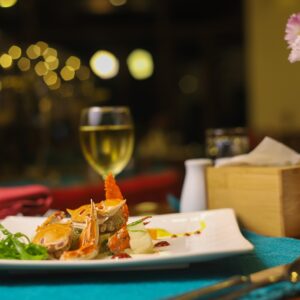
Eat low-risk foods instead. Some foods that are considered high-risk or “possibly dangerous” should be avoided or fully prepared before consumption because they are more likely to contain harmful bacteria, viruses or parasites. Here are a few high-risk food examples:
- Raw or undercooked meat, poultry and eggs: Meat, poultry and eggs that are raw or undercook may carry dangerous bacteria like Salmonella and E. coli that can lead to food poisoning.
- Raw or undercooked fish and shellfish: Fish and shellfish that are raw or undercook may carry dangerous bacteria like Vibrio and norovirus which can lead to food poisoning.
- Dairy products that have not been pasteurise: These items may contain dangerous germs like Listeria and E. coli that can lead to food poisoning.
- Raw sprouts: These may be contaminated with poisonous germs like Listeria, Salmonella and E. coli.
- Certain types of fruits and vegetables: Unhealthy bacteria like Salmonella and E. coli can cause food poisoning in some fruits and vegetables especially if they are eaten raw or undercook.
- Deli Meats: Deli meats are frequently made from cooked, sliced beef, pork or chicken that can get contaminated with dangerous pathogens if not handled carefully or stored properly.
- Soft cheese: If manufactured from unpasteurized milk, soft cheeses include feta, brie, camembert, blue cheese and queso fresco may contain listeria germs.
- Pre-cut fruits and vegetables: If they are not handled properly or stored at the suitable temperature, they may become contaminated with dangerous bacteria.
To reduce the danger of food poisoning, it is critical to be aware of certain high-risk items and to use extra caution when handling, storing and cooking them. Additionally, it’s crucial to adhere to the recommendations made by the FDA and your local health authority.









